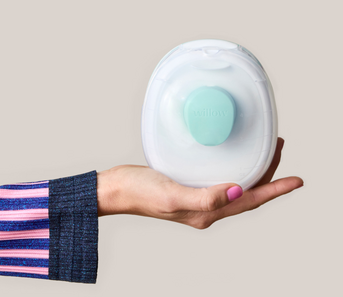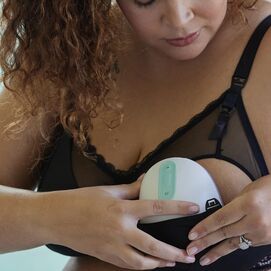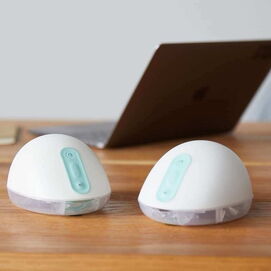Breast engorgement is a common but uncomfortable condition when the breasts become swollen, tight, and sometimes warm to the touch. While it can be uncomfortable—and you should be on the lookout for mastitis—you can usually get relief by breastfeeding your baby, or pumping or hand-expressing your milk. (Engorgement is sometimes mistaken for breast edema, which presents similarly with swelling and discomfort, but instead involves pressure from interstitial breast fluid in the first postpartum days, before your milk comes in.)
Breast Engorgement vs. Fullness
Engorgement is more than just breast fullness, which you may experience when it’s time to feed your baby. And it’s also distinct from a plugged (or clogged) duct. It’s the swelling and tightening of breasts when milk and lymphatic fluids further add to fluid build-up and congestion in overfilled mammary glands. Before draining those fluids, your breasts can become so firm and swollen that they are painful and warm to the touch, with their skin being stretched and shiny.

When Does Breast Engorgement Occur?
Engorgement typically occurs a few days after birth, as your breasts begin to produce milk instead of colostrum. Engorgement can also occur later, anytime there is more milk being produced than removed—like when your baby begins to sleep for longer stretches, or isn’t latching properly and draining your supply.
Breast Engorgement Causes
As milk production increases, so does blood flow to the breasts. Both increases can cause congestion in the breasts. If your breasts become engorged more than a few days after your milk comes in, it could be a clue that your baby isn’t latching correctly or feeding often enough (at least eight times every 24 hours in the first several weeks of life), or that you might be skipping feeds. A poorly fitting bra or tight clothing can further block ducts, and possibly lead to mastitis, which is the inflammation—and often infection—of breast tissue.
How to Help Relieve and Treat Breast Engorgement
If your breasts become engorged in the first few days following birth, try to frequently express your milk by breastfeeding or pumping. If you are trying to breastfeed, and your breasts are too taut for your baby to latch, or your flow comes too fast for your baby to handle, you can massage them and hand-express or pump milk to soften the areola and nipple beforehand. You can also:
-
Apply compresses—cold before warm. Cold is typically good if your breasts are not leaking, and a warm shower causes pain; warm is typically good if your breasts are leaking. (If you’re not sure, try cold compresses first. One trick for remembering to try cold first is to think of these in alphabetical order: Cold before warm.)
-
Take a warm shower or bath to get your breasts wet.
-
Consider a nonsteroidal anti-inflammatory medication like ibuprofen to reduce swelling.
-
Try “reverse pressure softening,”1 which involves gently but firmly pressing the base of your nipple and dragging your fingers away from your nipple across your breast tissue, then repeating from different points around your nipple. For help on the technique, refer to the below guide, or consult a lactation specialist, and schedule an in-person visit or televisit as soon as possible.
Learn More With Willow
Being a new mama can be overwhelming, pregnancy is an exhausting process, let alone trying to navigate all of the physical changes your body experiences! Looking for more resources? Visit the Willow blog to find insights and advice from real experts. You've got this!
REFERENCES
-
https://pubmed.ncbi.nlm.nih.gov/15117523/
Get pumping support with Simplifed
Get pumping support with Simplifed
Get access to free virtual feeding support from the lactation consultants at Simplifed. They can help you navigate supply issues, introduce a bottle, and more, and are trained on Willow pumps.














